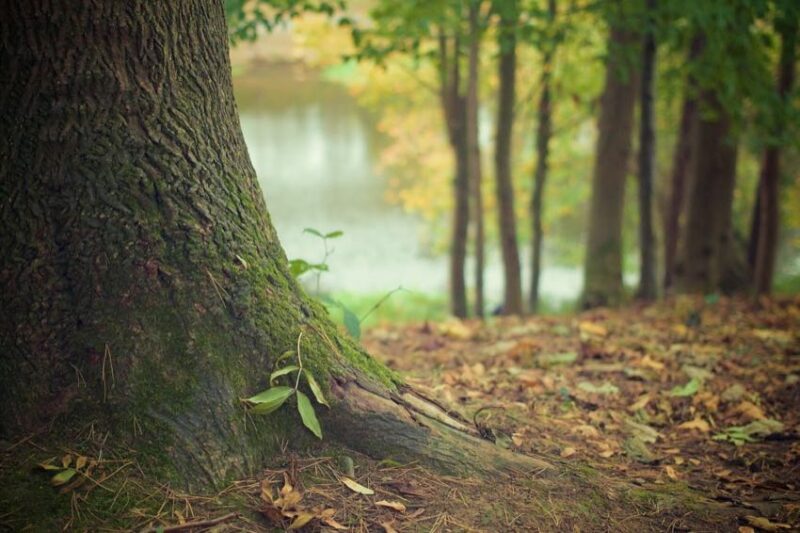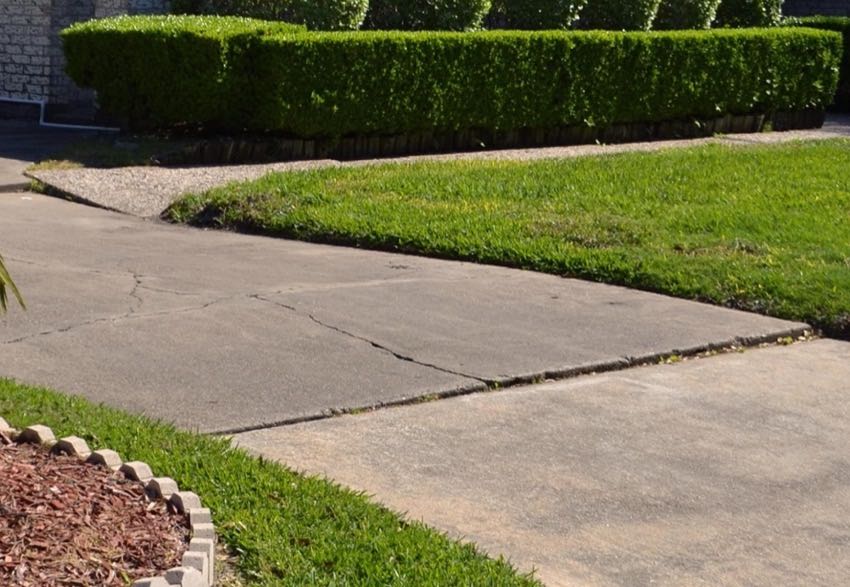What You Should Know About Tree Roots, Soil, and Your Foundation, and How To Prevent Concrete Damage
Most of us appreciate the value of a few trees in the yard. They provide shade. Visually, they break up the monotony of an empty lawn. However, healthy trees can do what they do so well by virtue of a root system. Under certain circumstances, those roots present a potential problem for the structural integrity of your house’s foundation. What should you know about tree root damage and how it can grow through, or even lift concrete slabs and driveways. We try to help you mitigate disaster further on down the road.
How Tree Roots Work and How They Affect Your Soil
Roots constantly extend themselves in search of water and nutrients in the soil to provide sustenance for the trees they support. This constant root movement also shifts around the soil. Which type of soil your foundation sits on generally determines the amount of shifting going on near or under the foundation of your house.

Tree growth and root movement affect two main types of soil. The first type of affected soil includes high clay composition. As roots extend further into clay soil, rather than shifting around, the clay compacts and becomes denser.
The other type of soil lacks this easily compressible clay. Composed primarily of looser dirt and rocks, this soil shifts around the root. This gives the root more freedom to move through it without compressing the dirt into densely packed soil.
How Weather Affects Soil and Root Systems
Weather conditions also affect the state of your soil and embedded root systems. A heavy rain season can leave your soil saturated and your roots expanded as they soak up water. Conversely, a drought can cause both roots and soil to contract. Both of these conditions—soil and root expansion and contraction—can damage the structural integrity of the soil.
It’s helpful to know what type of soil your foundation has been built upon as it can be a good predictor of what type of trouble you should keep an eye out for in the future.
Concrete Settling
Why does soil type, more so than the presence of actual tree roots, make for such a great predictor of potential damage in the future? Because, even for all of the grief we’re giving tree roots thus far, changes in the condition of the soil cause the most damage to a home’s foundation, usually in the form of settling concrete.

Now let’s bring tree roots into the concrete damage equation…
Tree Roots Causing Damage and Lifting Concrete Driveways
Tree root damage, generally, refers to how the roots cause soil to shift. This, in turn, can cause concrete to settle more quickly. While it can play a hand in foundation damage, it generally isn’t the direct cause of it.
Likewise, other factors like gardens, drainpipes, and poorly insulated basements can cause soil dehydration as well, resulting in concrete settling.
Sometimes, however, tree roots can grow directly towards the concrete foundation of your home. Or, they might grow underneath a walkway or your driveway. Over time, tree roots can cause the concrete in a driveway to lift and/or crack. When that happens you need to stop it at the source—hopefully without killing the tree.

Eventually…paper always beats rock!
Discerning Cosmetic Issues From Serious Foundation Problems
Sometimes, settling concrete only represents a cosmetic problem. Cracks forming across the surface of a foundation might not be anything more than unsightly.
However, when soil continues to expand and contract, your foundation can also shift and crack on top of it. Depending on how severe the settling is, the structure of your home could be compromised. Concrete settling can cause walls to sink and crack and support beams to shift. In very very rare circumstances, even walls and ceilings can be compromised.
Before you go hacking down all your trees within a 50 ft radius of your house, consider some other steps you can take to prevent damage to your house. The first thing you’ll want to do is to actually confirm that you even have any roots near the foundation.
Identifying Tree Root Damage
Roots tend to grow horizontally and close to the surface. When they run into the backfill soil near your foundation, they can begin to grow downward. You can sometimes find them by digging a foot or two under the surface of the soil within a few feet of the foundation.
Obviously, any lifted concrete pads with nearby trees tell you that you likely have a root directly underneath the affected area. Then it just becomes a question of how close to the tree you are and how it might affect the future growth of the tree.

What to Do If You Already Have Foundation Damage
If you already have concrete foundation damage you have several options. First and foremost, once you find the suspect root, you can typically cut it off. Installing a root barrier can prevent regrowth.
You want to stop the problem before you move on to repairing any damage. If you don’t, you’ll just be back in the same situation a couple of short years later.
For concrete damage and foundation damage due to shifting soil, you often have a situation where you need to lift the slab back into place. Several solutions exist for this including a process called “polyjacking” which is fun to watch .
If, however, your slab lifted due to a tree root underneath, you likely have to cut out the affected area, remove the offending root, and re-pour that section of concrete. That might be straightforward for driveways and walkways. For actual foundation issues, it’s best to involve an engineer.
Preventing Tree Root Damage to Concrete and Foundations
The above more or less assumes that your house already shares space with preexisting trees. What about when planting new trees? How do you prevent tree root damage to concrete and foundations?
Start by giving enough distance between trees and any buildings or concrete driveways and walkways. The math actually works out very simply. Estimate the size of the tree’s mature canopy. Then keep it half that distance away from your property.

When you think about it, what you’re doing is assuming the underground portion of your tree is as big as the above-ground portion. That’s likely an overestimation—but certainly a safe one.
Alternative Trees for Smaller Yards
If you don’t have a large enough yard to provide adequate space for the root system, consider a different landscaping option. You can always plant a smaller tree species. Here are some suggestions (check your climate or plant hardiness zone ):
- Apple, pear, and plum trees
- Hawthorn
- Dogwood
- Birch
- Crabapple
- Crepe Myrtle
Using Slow-Growing Trees to Prevent Foundation and Concrete Damage
Even if you have a larger yard, choose a slow-growing tree species whenever possible. Even better—grab one that isn’t known for having aggressive roots. Live oaks and sugar maples tend to grow slowly, while silver maples, willow trees, and elms tend to grow more quickly with deeper roots.
Final Thoughts
If you have the potential for tree root damage or you are experiencing tree roots lifting up a concrete driveway or walkway, you have several solutions. Prevention rules the day, but even after the fact you can correct and repair these situations with a bit of either elbow grease or an outside company.
In the end, knowing how to deal with the situation and prevent further issues helps you maintain your property and come away with the knowledge to keep your property in tip-top shape.
Have you read our guides to Tree Removal and Stump Removal costs?



